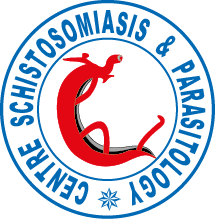Determination of ED50 values for praziquantel in praziquantel-resistant and -susceptible Schistosoma mansoni isolates
Abstract
The dose of praziquantel required to kill 50% of adult worms in vivo (i.e. the ED50) was estimated for nine different isolates of Schistosoma mansoni in infected mice. Four of the isolates were selected because they had not knowingly been in contact with the drug (i.e. they were putatively praziquantel-susceptible). Five putatively praziquantel-resistant isolates were chosen because they had been selectively bred for drug-resistance in the laboratory and/or had previously been shown to be relatively resistant to praziquantel in the field. The work was performed in three laboratories in different countries using pre-agreed and comparable experimental protocols. All four praziquantel-susceptible isolates had ED50s estimated to be <100 mg/kg (mean=70+/-7 SD; median=68), while all five putatively praziquantel-resistant isolates had estimated ED50s >100 mg/kg (mean=209+/-48 SD; median=192). Thus, the five praziquantel-resistant isolates, including two that had been subjected to drug pressure during more than 20 passages in mice, had drug ED50s that were approximately three times as great as those of the praziquantel-susceptible isolates. Two of the five isolates in the putatively resistant group had previously been passaged 15 or more times in mice without administration of drug-pressure, but had ED50s consistent with the other three isolates in the group, indicating that the trait of praziquantel-resistance did not necessarily impair biological fitness during laboratory passage. The protocols used here to estimate the praziquantel ED50s of S. mansoni isolates should be useful for establishing and monitoring the drug susceptibility/resistance profiles of parasite isolates freshly obtained from endemic areas, particularly those in which increased usage of the drug is likely to occur.
